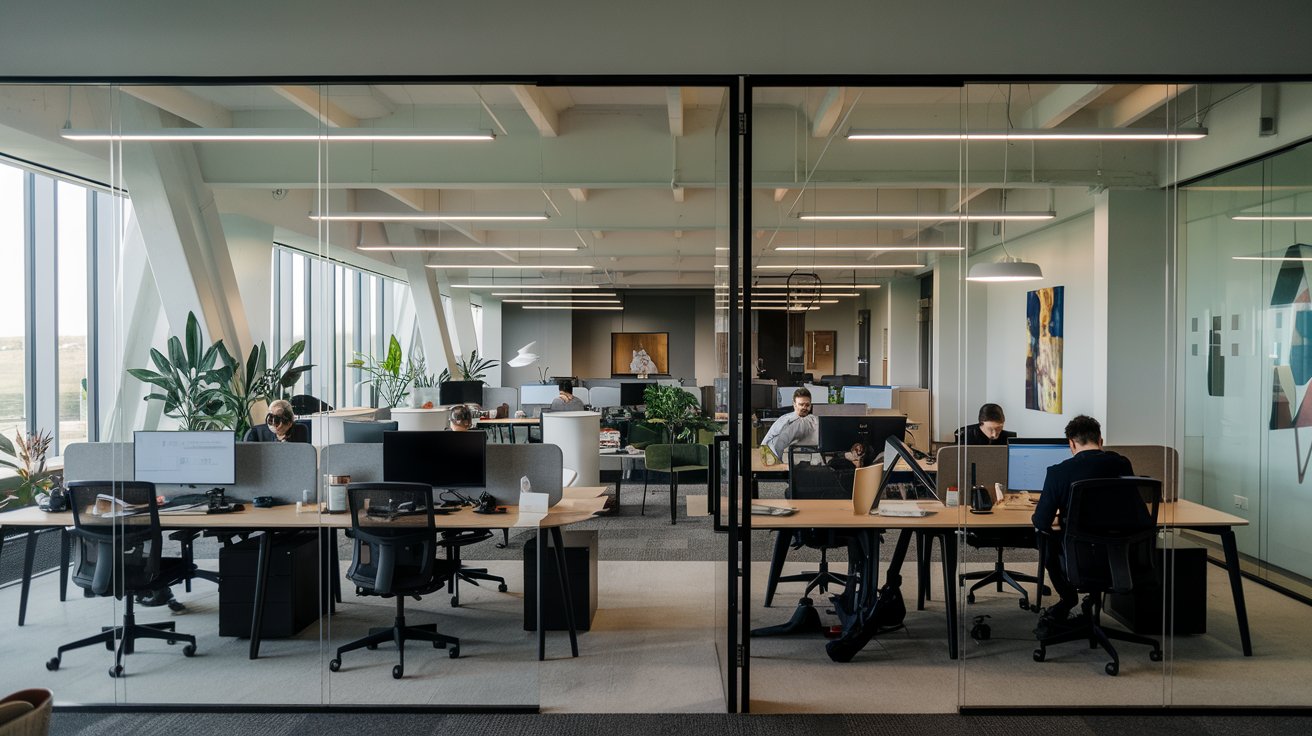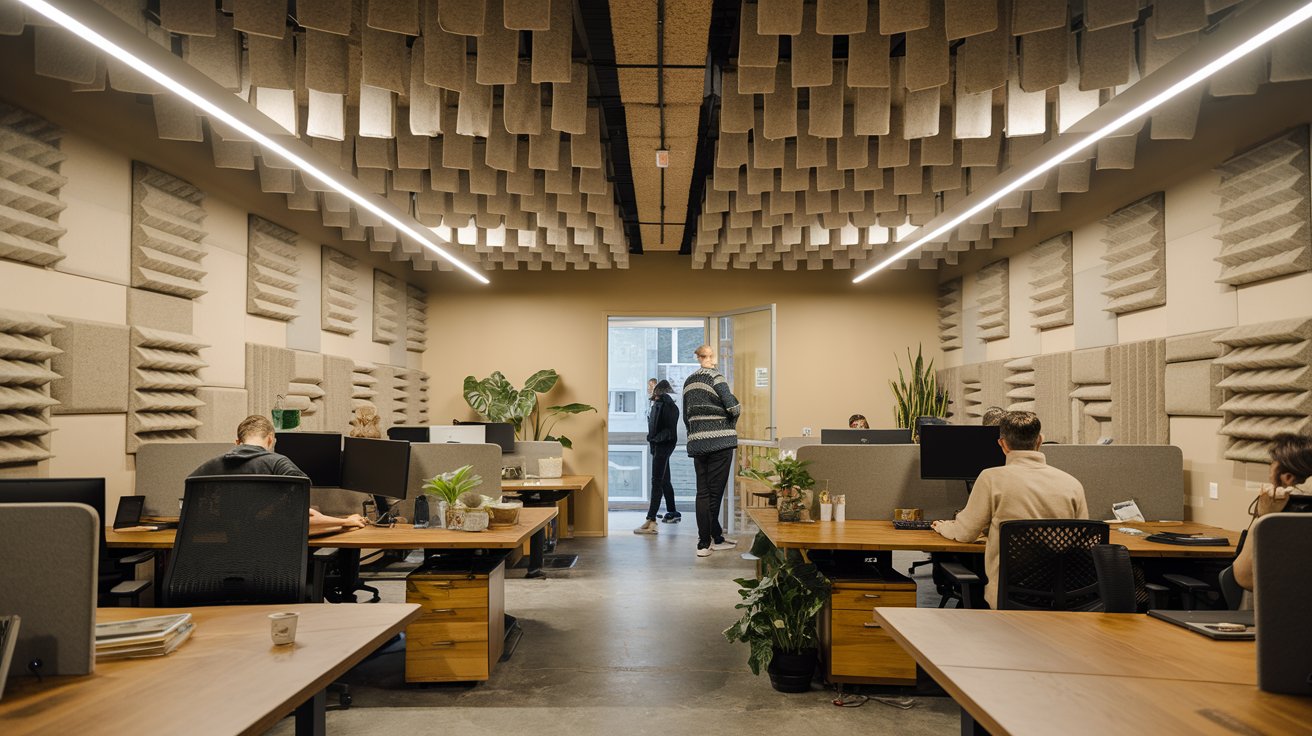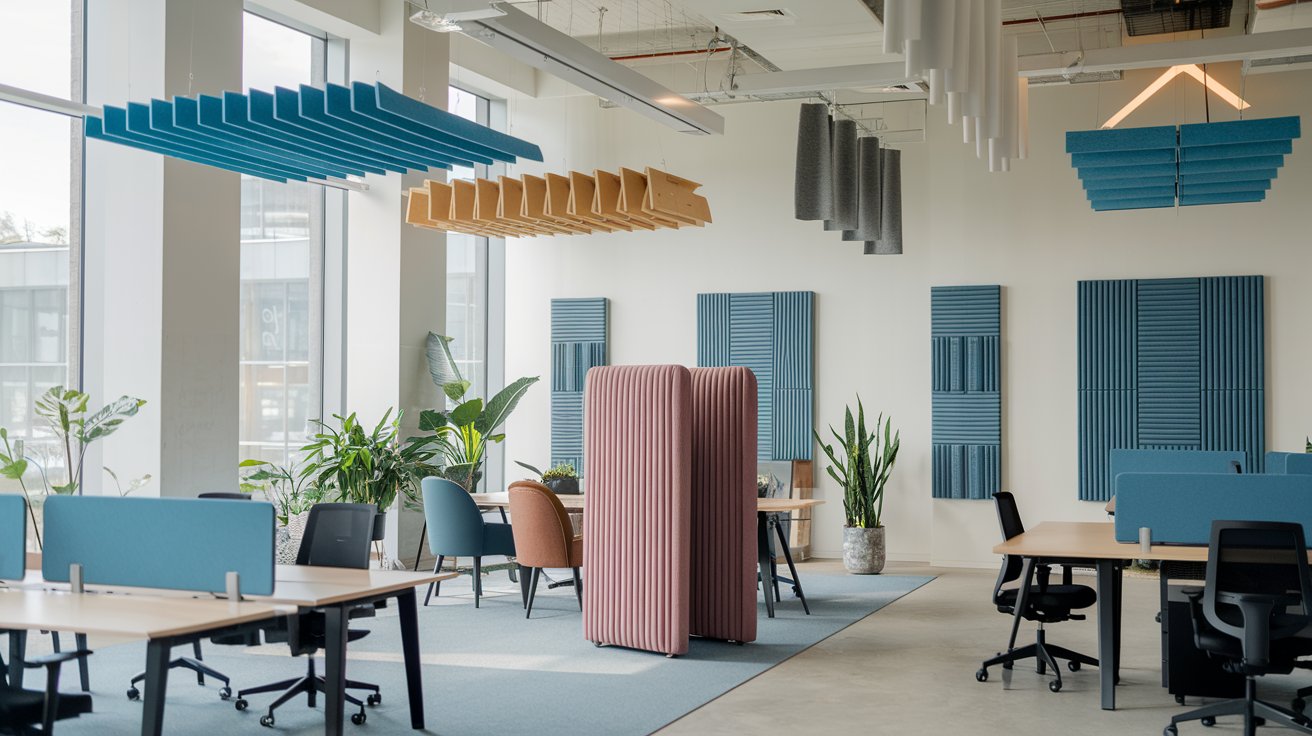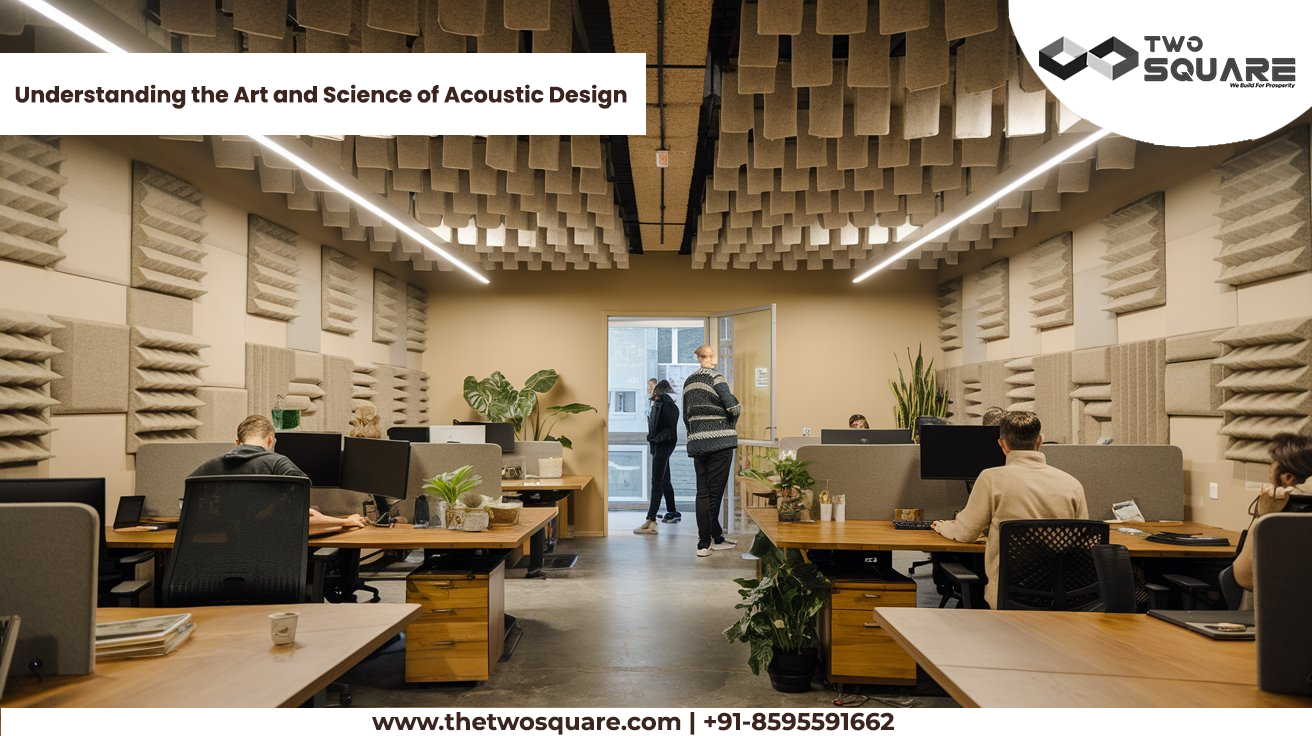Office Acoustic : Understanding the Art and Science of Acoustic Design
In today’s fast-paced work environments, the quality of sound in the office isn’t just a background concern—it’s a critical component of overall productivity and employee wellbeing. In simplest terms, office acoustics refers to the design and engineering of spaces to ensure that sound is managed effectively, whether that’s reducing unwanted noise, enhancing speech clarity during meetings, or creating zones of calm for focused work.
Did You Know?
Research shows that over 52% of employees struggle to concentrate amid office noise pollution, which can hurt both productivity and wellbeing over time.

Why Office Acoustic Matter
Effective acoustic design in the workplace goes far beyond aesthetic choices. It plays a crucial role in:
- Enhancing Communication: Clear speech is vital during meetings and collaborative sessions. Proper acoustics ensure that everyone’s voice is heard without excessive background noise.
- Boosting Productivity: A quieter, well-balanced sound environment minimizes distractions, helping employees concentrate on their tasks.
- Improving Wellbeing: Reducing ambient noise levels can lower stress and fatigue, fostering a healthier, more enjoyable work atmosphere.
What Is Acoustic Design?
At its core, acoustic design is about controlling how sound behaves within a space. This involves both sound absorption (minimizing echoes and reverberations) and sound diffusion (evenly spreading sound to avoid concentrated noise spots). By integrating these principles into office layouts, designers can create environments that are not only visually appealing but also acoustically optimized.
Key Principles of Office Acoustic Design
-
Sound Absorption:
Utilizing materials that absorb sound helps prevent echoes and unwanted reverberation. Common solutions include acoustic panels, ceiling tiles, and soft furnishings like carpets and upholstered furniture. -
Sound Diffusion:
Proper diffusion scatters sound waves evenly throughout the space. This is especially important in open-plan offices where uneven sound distribution can lead to hotspots of noise or silence. -
Noise Control:
Managing external noise—whether it’s chatter from colleagues or sounds from adjacent spaces—is a critical part of the design process. Incorporating partitions, specialized glazing, and strategic layout planning can help mitigate these issues. -
Tailored Solutions for Different Spaces:
Every area in an office—from private workstations and collaborative spaces to meeting rooms—has unique acoustic requirements. A well-designed office considers these differences, tailoring materials and design elements accordingly.

Implementing Office Acoustic Solutions in the Workplace
When planning an office space, a thoughtful acoustic strategy begins during the design phase. Here are some practical tips:
-
Incorporate Acoustic Panels:
Use panels strategically on walls and ceilings to absorb sound. These panels not only enhance sound quality but can also be designed to complement the office’s aesthetic. -
Designated Quiet Zones:
Establish areas dedicated to focused work where noise levels are minimized. These zones help employees escape the hustle and bustle of an open-plan environment. -
Acoustic Furniture and Partitions:
Consider investing in furniture and movable partitions that have built-in acoustic properties. These elements can offer flexibility, allowing spaces to adapt to different tasks and meeting types. -
Ceiling Treatments:
Specialized ceiling tiles and baffles can significantly reduce overhead noise and echo, creating a more balanced sound environment.
Overcoming Challenges in Open-Plan Offices
Open-plan offices are designed to foster collaboration, but they can also be breeding grounds for noise distractions. Some common challenges include:
-
Excessive Ambient Noise:
Without proper acoustic planning, the cumulative sound of conversations, phone calls, and office equipment can lead to a stressful work environment. -
Poor Speech Intelligibility:
In meeting rooms, overlapping voices and echoes can hinder effective communication. Installing sound-absorbing materials and acoustic enhancements is essential to ensure clarity. -
Balancing Privacy and Openness:
While modern offices value transparency, employees also need privacy. Acoustic zoning, through the use of partitions and specialized design elements, can help balance these needs.
The Benefits of Thoughtful Office Acoustic Design
Investing in quality Office acoustic design is an investment in the workforce. When employees are less distracted by noise and more engaged in their tasks, overall productivity and job satisfaction naturally increase. Additionally, a well-designed acoustic environment can reduce stress and improve mental wellbeing—a benefit that resonates throughout the entire organization.

Conclusion
Office acoustics is much more than an afterthought in design; it’s a fundamental aspect of creating a productive, comfortable, and healthy workspace. By understanding the principles of acoustic design and implementing tailored solutions, companies can transform their offices into environments that not only look great but also support the needs of their employees. In a world where every decibel counts, prioritizing sound quality is a clear pathway to success.


